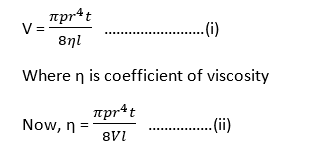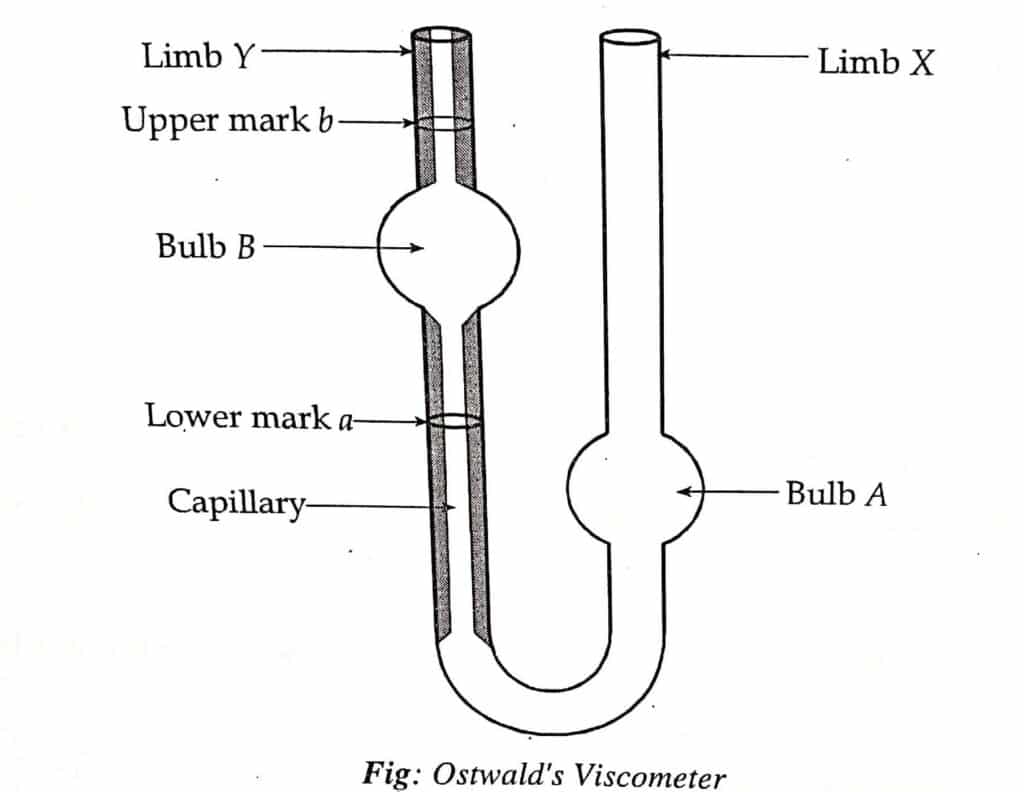Table of Contents
ToggleThe determination of viscosity of a liquid is generally carried out by Ostwald’s viscometer method whose principle is based on Poiseulle’s law. According to Poiseulle’s law, the volume (V) of liquid flowing through a tube having radius ‘r’ and length ‘l‘ under a difference of pressure at the two ends (p) within time ‘t’ is given by

With the help of equation (ii), the absolute value of the coefficient of viscosity can be determined. In practice, the relative viscosity of liquid with respect to water is determined.
How to determine viscosity of liquid?
The procedure to determine the viscosity of liquid using Ostwald’s Viscometer is described below:
We take Ostwald’s viscometer in its dry state. Water is initially inserted through limb X into Ostwald’s viscometer. The water is then drawn up toward limb Y to cross the upper mark “b.” The liquid is then permitted to flow down. The time it took for the liquid to flow from the upper mark (b) to the lower mark (a) is recorded using a stopwatch. The same procedure is carried out three times, after which the meantime is determined.

The viscometer is subsequently dried in the oven and cooled. The liquid under examination is then taken, and just as in the prior case, the time of flow from the upper mark to the lower mark is noted. Let t1 and t2 represent the times at which two liquids flow from mark b to a, respectively. Their relative viscosity coefficients are η1 and η2, respectively. Pressure at the two ends differs by p1 and p2, respectively. The radius of the tube is fixed, as is the volume of liquid from the higher point to the lower mark.
From equation (ii), we get

The ratio of densities of the two liquids can be determined by using a specific gravity bottle or pyknometer.
- η1/η2 is called the relative viscosity of the first liquid with respect to the second liquid.
- η2/η1 is called the relative viscosity of the second liquid with respect to the first liquid.
- If the first liquid is water, then the relative viscosity η1/η2 is called specific viscosity.
- When quantities of RHS in equation (viii) are known, then the value η2 can be determined. This value is called absolute viscosity.
Determination of Viscosity by Ostwald’s Viscometer video
References
- Halliday, David; Resnick, Robert; Krane, Kenneth S. (2010-04-20). Physics, Volume 2. John Wiley & Sons. p. 342.
- Arun Bahl, B. S. Bahl & G. D. Tuli, Essentials of Physical Chemistry, S. Chand and Company Ltd., New Delhi, 2012.






